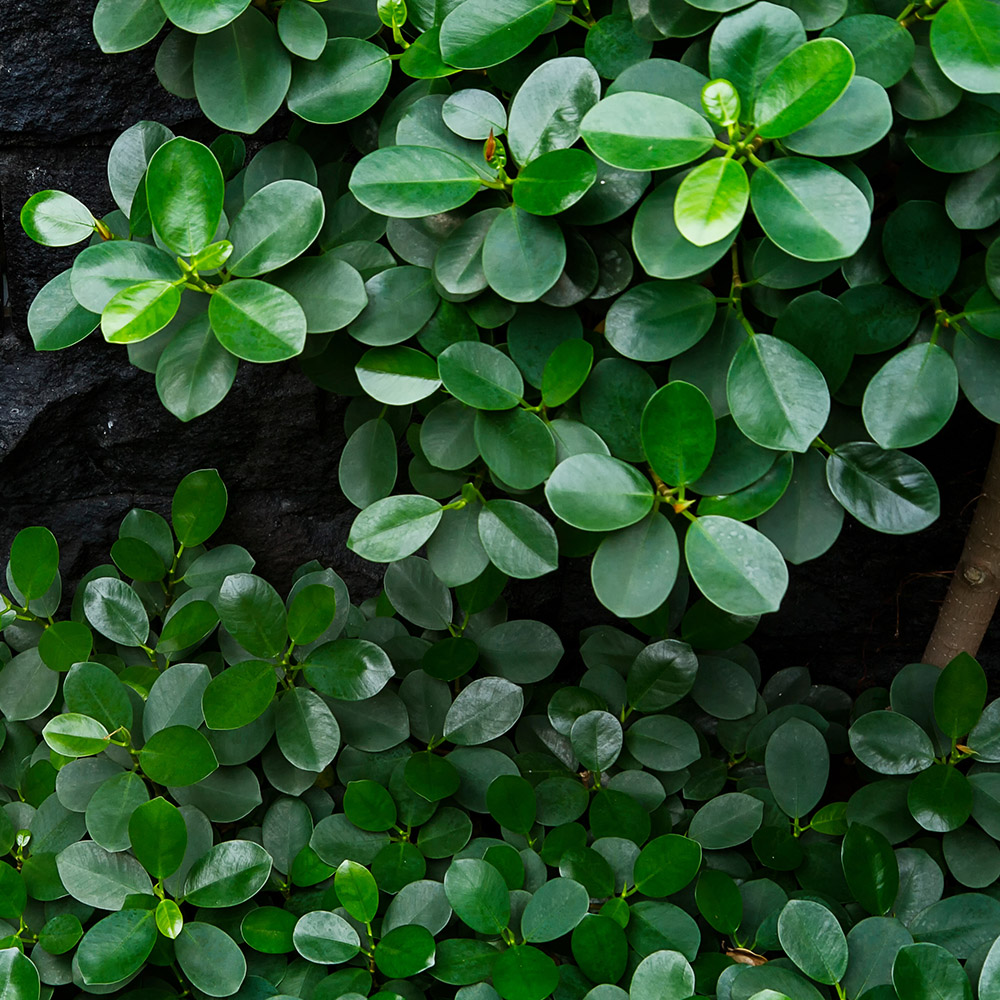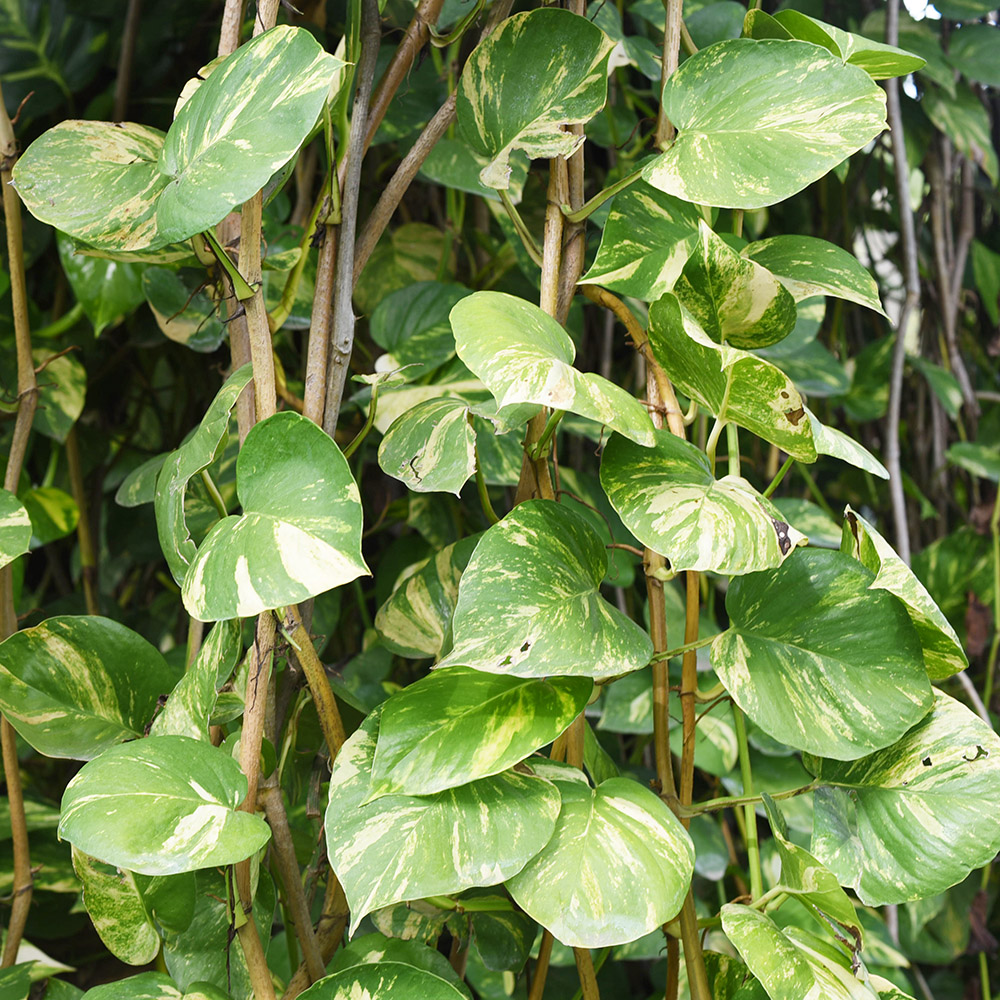10 Low-maintenance Indoor Plants & Flowers
If you don't have a green thumb, don't worry! Check out these low maintenance indoor plants that are sure to survive in your home or apartment.
Jun 18, 2019
Indoor plants are a delight, bringing beauty and life to our homes. You can enjoy an indoor garden year-round, whether you are a seasoned plant parent or a newbie to the gardening world, with easygoing, adaptable houseplants.
Here are 10 low-maintenance indoor plants that are sure to please if you give them just basic care — and will allow you to go away for a week and forget about them.
1. Aglaonema

The shiny, pointed leaves of the aglaonema come in a rich array of color combinations and patterns, including green, silver, pink, red, and white. It is treasured for its beauty and easy care, and has become a popular houseplant that will brighten any décor.
In general, aglaonemas need bright, indirect light, but the light-colored varieties will need more sun than the darker-leaved ones and can be set closer to a bright window — but never in direct sun. They also will appreciate warmth and being away from cold drafts. A standard potting mix should do fine for these plants, as long as it's well draining and will retain some moisture. Water them only when the soil is dry an inch down from the top, since aglaonemas like moist soil that is not overly wet.
Toxic to humans and pets? Yes.
2. Air plants

These cute little plants, with their scaly, gray-green, curving leaves, have exploded in popularity and are seen everywhere plants are sold. They are unusual in that they require no soil to grow. In the wild, air plants grow on trees, their small roots used only to anchor them to the branches. They grow in dappled sunlight and get their water from rainfall and humidity in the air.
Set your air plants in medium-to-bright indirect light and water them once a week by letting them sit upside down in water for about an hour. Shake them off and let them drain before putting them back on their stand. Misting daily will also help keep them in tip-top shape.
Toxic to humans and pets? No.
3. Aloe vera

Aloe vera is a great plant for beginning gardeners because it requires very little care and its gray-green leaves have a quiet appeal. It needs bright, indirect light; direct sunlight can burn its sensitive leaves. Standard potting soil mixed with sand and perlite will do the trick and allow water to drain easily. Water your aloe only when the entire potting mix is dry, and allow the water to drain completely out of the pot.
In addition to its beauty as a houseplant, aloe's thick, fleshy leaves hold a gel-like sap that can be harvested to ease sunburn and minor cuts and scrapes.
Toxic to humans and pets? Yes.
4. Lucky bamboo

Lucky bamboo gets its name from the upbeat symbolism of this plant in the Chinese tradition. It is sold as individual straight stalks or several stalks together in various curls, twists, or braids. The number of stalks growing together in a pot have different meanings. For example, two stalks represent love, three stalks mean happiness, wealth, and long life, and six stalks symbolize wealth and good luck.
Lucky bamboo is a very easy plant to care for. It can either be grown in water or a well-draining potting mix. If it's grown in water, it's good to use either distilled or rainwater since lucky bamboo is sensitive to the mineral salts in most tap water. If grown in soil, it needs to be evenly moist. Water only when the soil is dry down an inch from the top.
Toxic to humans and pets? Humans, no; pets, yes.
5. Orchids

Elegant, exotic orchids speak of luxury and beauty, but they are actually low-maintenance indoor plants. Give orchids as much bright, indirect light as possible, being careful to avoid direct contact with the sun's rays, which could burn their leaves and flowers. They grow best in warm environments with about 40% to 70% humidity. This is best achieved by placing them in a warm, sunny room with some humidity, such as a bathroom or kitchen, or with a pebble tray or humidifier that can give the humidity a boost. The best soil is a chunky potting mix that allows for air circulation around the roots and is specially formulated for orchids. Water your plant so that it runs through the pot and soaks the bark chunks, but don't allow the roots to sit in water. Only water it again when the bark dries out.
Toxic to human and pets? No.
6. Peperomia

There are more than 1,000 species of peperomia in the peppercorn family — one of which, peperomia obtusifolia, or baby rubber plant, is the 2022 Plant of the Year — and many of them are popular as easy-care houseplants. Their thick, rubbery leaves come in a variety of delightful shapes, sizes, textures, and colors. In addition, some peperomias are trailing plants — plants that have long, trailing stems — and others are upright.
But in spite of their diverse looks, peperomias all need similar care. They thrive in bright to moderate indirect light, and average household temperatures and humidity. Peperomias are pretty forgiving plants, so it's OK to water them only when their soil is dry.
Toxic to humans and pets? No.
7. Pothos

Beautiful, trailing pothos is a wonderful houseplant that can be grown successfully in most household environments. Its heart-shaped leaves display different amounts of variegation depending on the variety, and this will dictate how much indirect light it needs. The foliage with the most variegation of white, cream, or yellow will need brighter light, and, conversely, the greenest foliage will need the least light. Pro tip: Highly variegated pothos leaves will begin to revert to all green if they don't get enough light. They will live happily in average household temperatures and humidity, and will need water when their soil is dry.
Toxic to humans and pets? Mildly.
8. Snake plant

The sword-like spires of the snake plant rising out of the soil make a bold statement in a room. Depending on the variety, the leaves can be striped, patterned, or solid colored, with shades of green, cream, or yellow. It is a favorite for home and office because of its hardiness, low-maintenance qualities, and striking appearance. It will grow in medium to low light and in average humidity, and it doesn't like to be watered frequently. Only water your snake plant when the soil is dry, and make sure the water drains completely out of the pot since the roots are susceptible to fungal diseases.
Toxic to humans and pets? Yes.
9. Succulents

Succulents are arguably the easiest low-maintenance indoor plants to grow because of the minimum amount of care they require. They are not a single scientific group but rather encompass over 10,000 species of fleshy-leaved, drought-resistant plants native to dry, desert areas of all continents except Antarctica.
Succulents come in a wide variety of shapes, colors, and patterns, and some will flower readily indoors. They need three basic things to grow successfully: the right soil, plenty of sun, and infrequent watering. A light, well-draining potting mix is essential to these plants' survival. A commercial succulent mix works well, and you can also make your own by mixing half a standard potting mix with sand and perlite. Some will tolerate direct sunshine, while others will grow in a variety of light levels, but all succulents will grow happily in very bright, indirect light with a minimal amount of water.
Toxic to humans and pets? Most are not, but kalanchoe and euphorbia are.
10. ZZ plant

The stiff stems and leathery, compound leaves of the ZZ give the impression of a tough, resilient plant that is almost indestructible. In this case, the first impression is the right one, as the ZZ plant thrives on neglect and can live in a variety of conditions. It will grow in low light as well as bright, indirect light, although it tends to get leggy if the light is too dim. It will tolerate year-round household temperatures and humidity levels, and only wants to be watered when its soil is completely dry. Be sure the water drains out of the pot after watering. The ZZ plant is sensitive to overwatering and will develop root rot if its roots are allowed to sit in water.
Toxic to humans and pets? Yes.








